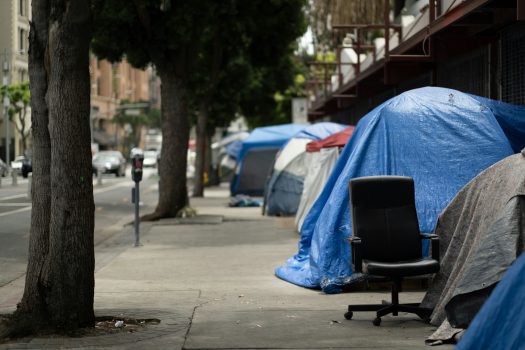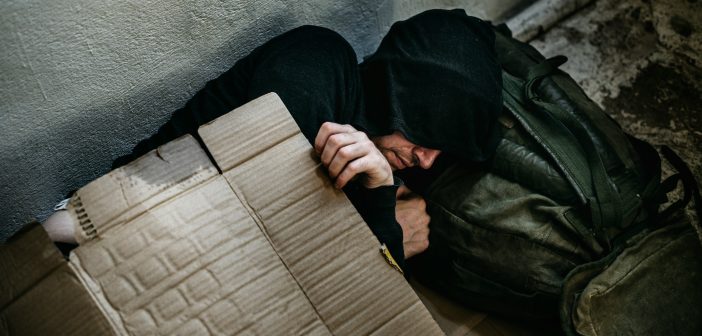A young boy, barely 18, struggles to hold up his sagging pants as he attempts to inject a needle into his arm. The former high school star athlete sways, lost in a world of pain and desperation, while businessmen in suits hurry past, numb to the suffering just feet away. The scene evokes an urge to help, to intervene, to save the boy from the tragic fate that seems inevitable. Yet, as haunting as this moment is, the reality is even bleaker – one block over, and then another, the same heartbreaking scene repeats, a tragic echo in a city that has grown accustomed to looking away.
Over the past decade, British Columbia has faced an escalating crisis as mental health challenges, drug use and “houselessness” converge at an alarming rate. Each of these issues feeds into the next, exacerbating the situation and creating a cycle that seems nearly impossible to break. For those who have experienced addiction firsthand this crisis is not just a series of numbers – it’s a deeply human experience marked by resilience, vulnerability, and an often-overlooked complexity.
The Overdose Crisis in British Columbia
British Columbia is currently grappling with one of its most significant public health crises, as the overdose epidemic continues to devastate communities across the province.
Toxic, unregulated drugs have claimed over 21,000 lives since 2016, with neighborhoods like the DTES bearing the brunt of the crisis.
A reason for this is many individuals in Canada facing poverty migrate to the DTES seeking Vancouver’s milder climate and more survivable winters. The city also offers more support resources, including safe injection sites. However, when combined with the ongoing housing crisis and the opioid epidemic, these factors worsen the situation in the DTES. Despite numerous efforts to address these challenges, the crisis persists, leaving countless individuals on the streets – many of whom are struggling with deep trauma – largely overlooked and dehumanized by society. Now, more than ever, we need empathy, understanding, and comprehensive support to tackle this complex emergency.

A row of tents lining the streets, captured by Levi Meir Clancy on March 9, 2023, highlights the urgent housing and social challenges in the area.
In British Columbia, the number of illicit drug toxicity deaths has seen a dramatic increase, with 1,733 deaths reported in 2020, a 74% rise from the previous year. This trend continued with 2,511 deaths in 2022, marking the highest annual total recorded, and the first half of 2024 saw an alarming average of six deaths per day, totaling 1,158 toxic drug deaths.
Cause and Crisis
The drug epidemic in British Columbia has worsened due to numerous factors that have created a perfect storm over the years. In an unending cycle, the safe winters in Vancouver, the promise of support services, and the growing homeless population all contribute to an escalating demand for drugs. As more individuals seek refuge in the city, the cycle intensifies, with the demand for opioids and other substances continuing to rise alongside the increase in homelessness and the strain on available resources. A major risk is also the rise of powerful synthetic opioids like fentanyl, which are extremely potent and have led to a significant increase in overdose deaths. Fentanyl often contaminates the drug supply, making every use risky for people struggling with addiction.

Various pieces of drug paraphernalia scattered on the street, photographed by Jonathan Gonzalez on March 4, 2019, offering a stark glimpse into the ongoing substance use crisis.
Additionally, systemic issues such as a lack of affordable housing, high levels of poverty, and limited access to mental health and addiction treatment services have left many people vulnerable. The COVID-19 pandemic further exacerbated the situation by increasing isolation, disrupting social services, and creating economic strain, all of which pushed more people into crisis.
Alberto (Bert) Pasqualotto, CCAC, CCRC, program coordinator at Vancouver’s Together We Can drug and recovery center, highlights how inadequate funding affects both outreach efforts and the availability of treatment beds. “We can be out there building relationships with people on the streets, but when they’re finally ready to get help, they might face a three-month wait for an available bed.”
For someone living on the streets, surrounded by easy access to drugs, a three-month wait can feel like a death sentence. Staying sober during that time is nearly impossible without support, and each passing day increases the risk of overdose.
Government Interventions: Safe Injection Sites
In response to the ongoing crisis, the British Columbia government has implemented harm reduction strategies, including the establishment of safe injection sites. These facilities provide a controlled environment with clean needles and medical supervision, aiming to reduce harm and prevent overdoses. In areas like Vancouver’s Downtown Eastside, where many of these sites are located, the results have been promising, though the approach continues to spark debate.

Photographed by Nappy Studios and published on October 27, 2022, a doctor carefully preps a syringe, emphasizing health and safety in the safe injection sites.
From a health and safety perspective, these sites help mitigate the risks of a tainted drug supply by providing clean tools and moving drug use off the streets into a safer environment. However, from a recovery standpoint, some believe they may inadvertently enable addictive behaviors. Bert suggests that if these sites emphasize recovery by offering information and access to treatment options alongside harm reduction tools, their overall impact is positive. While their role in addressing the larger issues of addiction remains contested, the broader challenges persist regardless of their existence.
Restoring Humanity
While homelessness in the Downtown Eastside may have become a familiar sight, it’s vital to remember the humanity of each individual. Cultivating empathy and recognizing the shared humanity behind each face is essential. People like Bert, who finds fulfillment in “seeing the change and recovery from those coming from a hopeless place,” offer a glimmer of hope. He reflects, “There are clients at the lowest point of their lives who are now fathers of two, with a family full of love. The losses in this work push you to work harder, but the wins make it worthwhile.”

Two men share an emotional embrace at a support group, captured by Adrianna Geo on December 29, 2020, illustrating the power of connection and healing in difficult times.
Addressing homelessness requires more than just resources – it calls for a community willing to look past stereotypes, advocate for effective solutions, and drive systemic changes to combat poverty, addiction, and mental health struggles. As someone who has gone through the struggles of addiction, I know firsthand how easily one’s life can spiral. It was very possible that I could have been that 18-year-old former athlete struggling on the street, consumed by the weight of my challenges. I’m one of the lucky ones who got out, but many others don’t have the same opportunities. Now, I believe it’s important to not only provide resources but to help create a society that offers hope, second chances, and genuine support to those still fighting their battles.
Featured Photo: Photo courtesy of Unsplash: A homeless man lies passed out on the street, a stark reminder of the challenges faced by the most vulnerable in our society.




